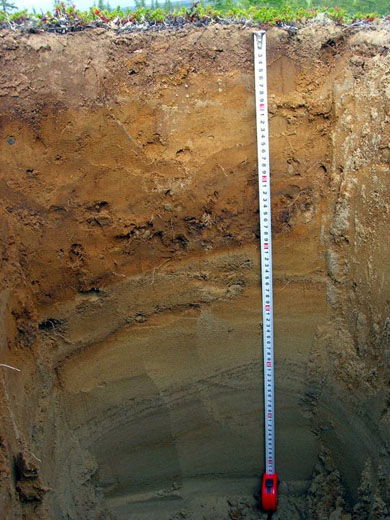Soils of the Avam forest-tundra (Southwestern Taimyr)
DOI:
https://doi.org/10.31251/pos.v7i2.255Keywords:
North Siberian lowland; Dudypta River; soil cover.Abstract
The purpose of the study was to describe the common characteristics of the soil cover of the poorly studied territory of the Avam tundra.
Location and time of the study. The soil survey was conducted during the summer season (end of July – mid of August) 2021 in the North Siberian lowland in the middle Dudypta River, 45–60 km to the north of the Central Siberian Plateau.
Methodology. Soil pits (24) were dug at three key sites, in the most typical habitats. The main soil chemical properties were determined in 53 samples from 13 pits.
The main results. The soils of automorphic conditions were identified as Cryosols on the loams and as Arenosols on sands and sandy loams. Under difficult drainage, Gleyic subtypes of these soils or Gleysols are common. Zonal Cryosols are more typical for larch woodlands mostly in the eastern part of the territory. Arenosols are distributed mainly on the sandy sowback in the eastern part, and on the second above-floodplain terrace of Dudypta and Kystykhtakh. Arenosols microcomplexes are common for the spotted tundra of the second above-floodplain terraces. On sandy loam and loamy sediments, upper gleyic layer is formed under the spots. These soils are interbedded with upper gleyic Cryosols. The floodplains are occupied by Humic Fluvisols, and Histic Gleyic Fluvisols of the first floodplain terrace.
Conclusion. In general, the soils, typical of the Taimyr forest-tundra, are common in the surveyed territory. Given the limitations of our research on the most drained parts of the terraces, the location of podburs may be a characteristic feature of this particular part of the terraces. It can be assumed that in the central, more hydromorphic parts of the local watersheds, the Gleysols are more common.
Downloads

Downloads
Published
How to Cite
Issue
Section
License
Copyright (c) 2024 The Journal of Soils and Environment

This work is licensed under a Creative Commons Attribution 4.0 International License.






